Railroading became part of the New Utrecht Avenue story in 1863, when a steam railroad built by Charles Godfrey Gunther, a former NYC mayor, was built from the entrance to Green-Wood Cemetery to Bath Beach. The line necessitated a transfer at 36th Street (just as today’s subways do from the D to the N and R) because steam railroads were forbidden in Brooklyn in that era. A horsecar line completed the run from 5th and 36th to 5th and 25th. The steam line was completed out to Coney Island in 1864, where it met the West End Hotel. After an 1885 reorganization the line became the Brooklyn, Bath and West End Railroad, was electrified by overhead catenary wire in 1893, was acquired by Brooklyn Rapid Transit in 1898, and finally, was replaced by the West End Elevated in November 1916. Unfortunately, Gunther’s name never attached itself to subsequent iterations of his railroad the way Andrew Culver’s did to what is now the F train in Brooklyn.
Charles Gunther’s Railroad [thirdrail.net]
I happen to have a series of photos of New Utrecht Avenue in the early 1910s, just before it was shadowed by the West End el. In the title photo, a charming chalet-like station can be seen at the semirural corner of New Utrecht Avenue and 44th Street. Fort Hamilton Parkway can be seen in the background.
Today, this is the site of the Fort Hamilton Parkway station. The two streets meet at an “X” in the middle of Borough Park’s otherwise checkerboard grid. When the station was built in 1916, it was deemed important enough by Brooklyn Rapid Transit that the pillars got the concrete cladding an Guastavino tilework reserved for stations that were supposed to be quite busy.
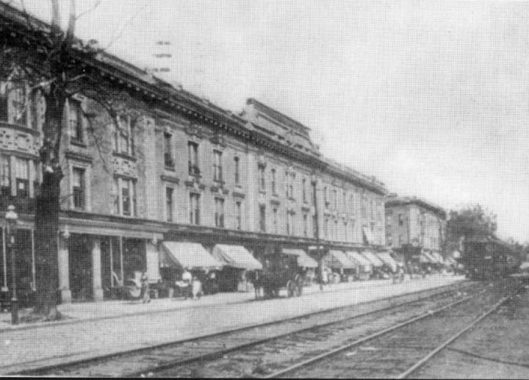
This series of two-story mixed-use brick buildings can still be found on the west side of New Utrecht Avenue between 50th and 49th Streets.
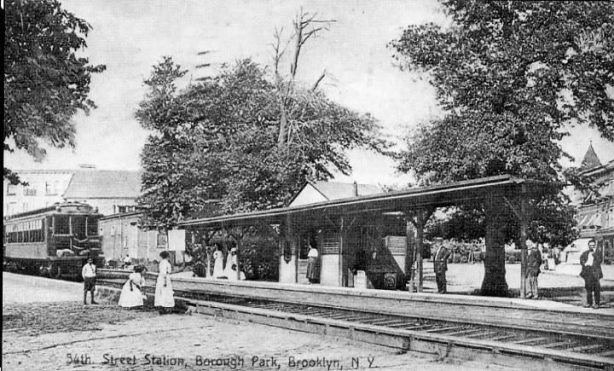
I have two renderings of the 54th Street station, at which 13th Avenue crosses New Utrecht Avenue. This one shows the chalet station. I don’t see any overhead wiring here. I’m unsure if the Gunther West End RR had an electrified rail by the 1910s, but the kids playing near the tracks suggests otherwise (fill me in in Comments). Back then, of course, even kids had common sense and wouldn’t go near the electrified rail.
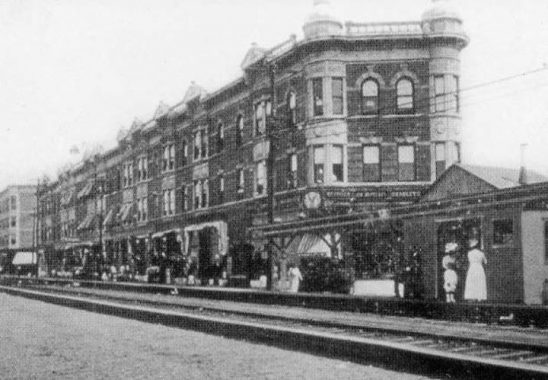
Another view of the 54th Street station, showing a two-story building…
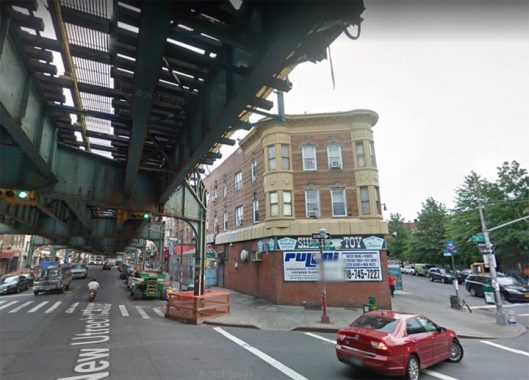
…that remains there today, and is the longtime home of Shem Tov Caterers in what for decades has been a heavily Hasidic Jewish neighborhood.
Check out the ForgottenBook, take a look at the gift shop, and as always, “comment…as you see fit.”
10/21/19

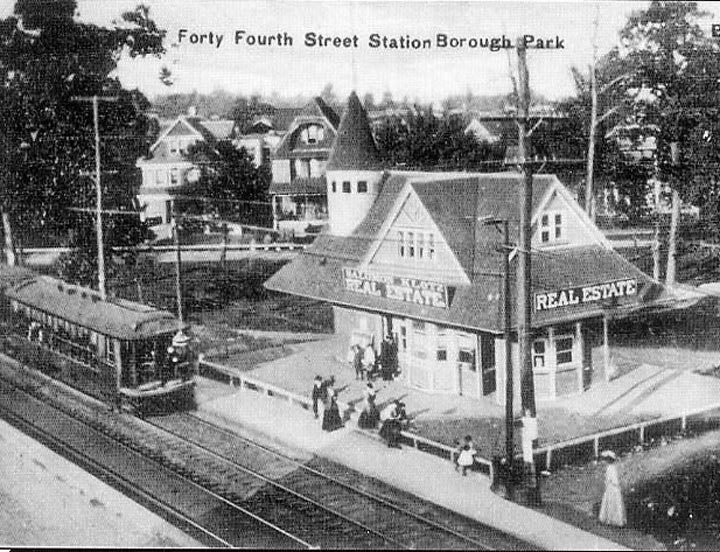
5 comments
Re the no overhead wires and no 3rd rail, (and no apparent under track conduit) one possibility is a gas powered streetcar, which did exist at the time, although not common. I’ll let the real experts respond, though.
That looks like a 3 story building to me. :~)
I have my own theory about the “Fancy” concrete clad Dual-Contracts El stations, at least in the Bronx. To me, for the most part, it seems when ever a form of “Park” is in the station name, crosses over a Parkaway, or is adjacent to a large park, the stations get the treatment. Jerome Av El: 1) Woodlawn, next to Van Cortland Park. 2) Mosholu Parkway. 3) Bedford Park Blvd. 4) Yankee Stadium-161 St. White Plains Rd El: 1) Pelham Parkway. 2) Bronx Park East. Pelham El: 1) Pelham Bay Park. 2) 177 St-Parkchester.
I suspect the overhead wires are there, but not visible; the car in the picture has a trolley pole on it, but it is down as it would be if the car were moving toward the camera. Elevated lines used an uncovered third rail, similar to that used in Chicago today, and the shoes were suspended over the rail. This would have been even more hazardous than the covered third rail in areas accessible to the public.
Re: how they were powered…steam until 1893, electric overhead wires until 1916
Direct quote from nycsubwayorg: “In 1893, the line was electrified with trolley wire and merged with the Atlantic Avenue Railroad which itself merged with the Nassau Electric Railroad in 1898. In November of 1893, the Atlantic Avenue Railroad started running streetcars on the line, and in early 1894, railway post office mail was begun on the line to Coney Island.
In 1901, BRT elevated trains began using the surface West End trackage, using trolley poles. Service connected to the West End from a ramp of the 5th Avenue elevated at 36th Street. Called the “5th Ave – West End Line”, it ran using third rail from Sands St or Park Row to 36th St and then by trolley pole to Coney Island. Originally, the West End Line has its own Coney Island terminal, but later in the 1900s shared a terminal with the Sea Beach line. In 1919, both the Culver and West End Lines moved to their new terminal, the present-day Stillwell Avenue and Coney Island BMT stop.